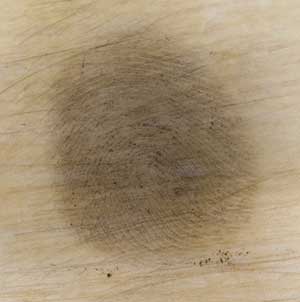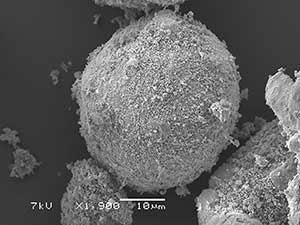Elephant ivory appears quite smooth to the naked eye, but zoom in with a microscope and you will see that it is riddled with tiny pores. Those holes soak up fingerprints like a sponge, quickly obscuring evidential marks from even the most meticulous forensic expert.
Criminals who handle illegal ivory might soon need to start wearing gloves, however. Two newly developed powders—commercially available for several years but previously untested on ivory—can reveal prints left on elephant tusks for up to four weeks, according to findings published in Science & Justice.
Last year an estimated 33,000 elephants were killed for their tusks, and in central Africa 64 percent of elephants have been lost to poachers over the past decade. If the killing continues unabated, conservationists estimate that the animals may go extinct in some African countries within the next decade.
On supporting science journalism
If you're enjoying this article, consider supporting our award-winning journalism by subscribing. By purchasing a subscription you are helping to ensure the future of impactful stories about the discoveries and ideas shaping our world today.
.jpg?w=600)
Example of fingerprints enhanced on a full tusk (annotated).
Credit: Metropolitan Police Service
Traditional powder’s grain size averages about 100 microns across but the two newer ones are less than half that size. Because the particles are so much smaller, they are better able to stick to minute quantities of fingerprint residue. Their composition—which includes iron, silica and carbon—also allows them to latch onto both water- and oil-based particles left in fingerprints.

28-day-old fingerprint on ivory enhanced with reduced-scale powder.
Credit: Metropolitan Police Service
Conventional powders can identify fingerprints left on ivory for only one or two days, but using the new compounds researchers found they could identify 95 percent of marks left on three elephant tusks for up to seven days. Visibility began declining after that, although in some cases they recovered viable prints up to 28 days after the ivory had been handled. The team also found that the new powders worked well for hippopotamus and sperm whale teeth and, to a lesser extent, raw rhino horn, which is more ridged than those other materials.
Given the finite length of time fingerprints can be recovered from ivory, the new powders are most useful for rangers and border police who seize ivory in the field or in transit. Leon Barron, a senior lecturer in forensic science at Kings College London and co-author of the findings, has already received messages from officials in elephant range countries who are interested in giving field agents access to the new powders. He has also prepared a field kit for doing so, priced at less than $150. About the size of a notebook, it contains all of the tools an investigator would need to examine ivory for fingerprints and to lift those marks as evidence. As Barron says, “we want to engage now and get this rolled out.”

Electron micrograph of a reduced-size magnetic particle.
Credit: King's College London and University College London
The new technique is a welcome development for combating elephant poaching, says Ross McEwing, technical director of the TRACE Wildlife Forensics Network, a nongovernmental organization that uses forensic science to investigate wildlife crime. But the challenge, he says, will be establishing and maintaining secure, searchable fingerprint databases, which are lacking in some African countries where the method could prove most useful.
Another problem, he continues, is the fact that trafficking kingpins usually do not come into contact with ivory directly. So it is possible that fingerprinting could increase the number of ivory prosecutions, yet have a negligible effect on actually reducing the volume of animals killed. As McEwing says, “National and international couriers are dispensable and readily replaceable.”